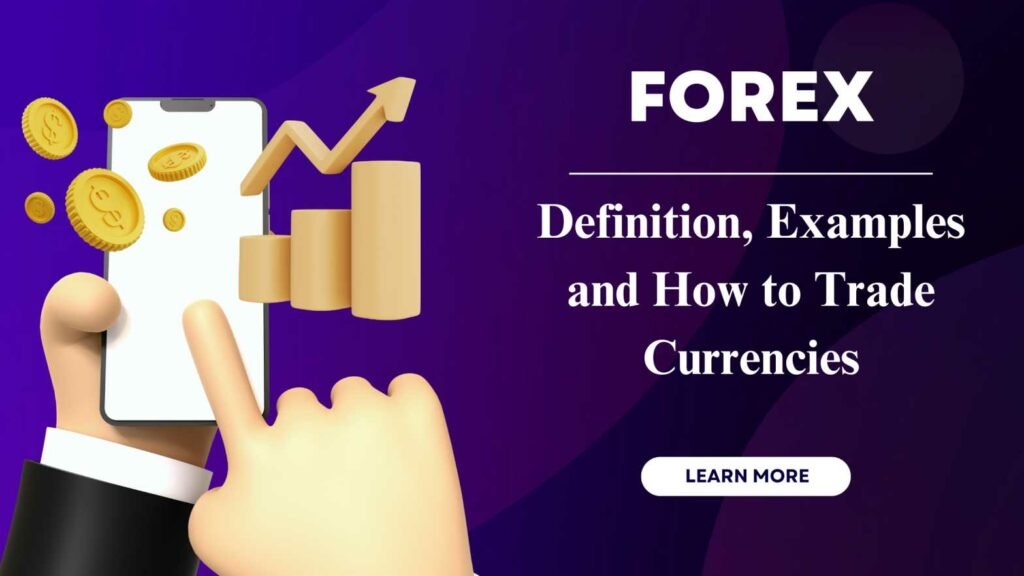Last updated on August 17th, 2024 at 06:01 am
Of late, Forex, meaning foreign exchange, has attracted a lot of attention. It is one of the largest, most liquid, and most popular markets in recent times. Understanding the forex meaning can help you obtain immense profit opportunities in the market.
If you’re an investor, trader, or businessman there is a myriad of advantages to forex. The digital and decentralized marketplace is volatile but lucrative and increases accessibility and risk mitigation. Understanding the forex meaning is crucial for anyone willing to dabble in it and profit from the fluctuations.
We will discuss what forex is in this article and then dive deeper into the dynamic market and learn how currencies are traded. Keep reading to learn more!
What is forex trading?
Imagine this: A digital and decentralized market with high liquidity. Forex or foreign exchange is the largest digital market worth $2409 trillion as of this quarter. Even without a central location, it is one of the largest and growing marketplaces there is. You’ll find trades being made through banks, brokers, or financial institutions.
But what is forex trading? The general forex definition is essentially trading one currency for another. When you travel internationally, you need to exchange currencies with the country you’re traveling to. Traders in the foreign exchange market generally do this for you. They analyze the market and predict the change in exchange rates to profit from this process.
A popular forex trading example is the EUR/USD pair. Every pair has an exchange rate against each other. Every currency has a bid and ask price. Precisely the prices at which they can buy and sell currencies respectively. The difference between the two is known as the spread.
Understanding forex trading
Foreign exchange is not too complicated. However, it requires an understanding of the forex meaning. A thorough analysis of currency pairs and choosing the optimal pair is crucial. Multiple factors affect foreign exchange and exchange rates, like interest rates, geopolitical situations, economic performance, price speculations, etc.
Three primary types of markets uphold the forex meaning:
- Spot forex: The most active and liquid market that facilitates immediate delivery at current market prices. Supply and demand forces drive these prices, and trades occur here 24 hours a day.
- Forward forex: Trades here rely on prediction and analysis. Traders use customized contracts to lock in on future exchange rates. They use these rates to buy or sell currencies, immunizing them against currency fluctuations.
- Futures forex: Like forward forex, you’ll find contracts here too. However, these contracts are standardized and regulated by different, mostly government organizations. Trades are carried out on regulated exchanges like the Chicago Mercantile Exchange (CME).
The aim is to profit from these exchange rates. Predicting whether the value will appreciate or depreciate, pairs are bought or sold respectively.
Forex trades are decentralized and not tethered to a single physical location. Trades are carried out digitally through webs of networks. You can use different trading platforms for forex trading. IG, Interactive Brokers, Forex.com, and Saxo, are some of the most popular among them.
Forex trading example and how to trade currencies
Forex is traded in currency pairs. The most prominent forex trading example would be the EUR/USD pair. Other currency pairs like GBP/JPY, AUD/USD, USD/CAD, etc. are popular among traders. Let’s have a look at an illustration to practically understand what is forex trading. Hope this will help you grasp how you can trade in this market:
- EUR/USD: Let’s say you predict the euro strengthening against the USD. So you purchase 20,000 euros at an exchange rate of 1.5 USD/EUR. It costs you $30,000 (20,000 euros X 1.5 USD/EUR).
In case the exchange rate hypothetically appreciates to 2.0 USD/EUR, you can sell the euros. And as the value goes up, the valuation rises to $40,000 (20,000 X 2.0 USD/EUR). So this leaves you with a huge profit of $10,000.
Now let’s reverse it. Imagine you predict the EUR/USD pair weakening. So you decide to sell it at the same exchange rate of 1.5, earning $30,000. But this time, the exchange rate depreciates to 1.00 USD/EUR. So you buy the shares back and pay only $20,000, thus retaining a profit of $10,000.
This is how forex trading works. Hope this example helps you in realizing the practical forex meaning. Understanding this can help you in making calculated decisions.
Features and advantages of forex trading
The forex definition of the digital market has changed trading drastically. It is one of the most active markets in recent times. In fact, in 2022, the global daily trading volume reached $7.5 trillion. Unlike other e-markets, many features have highlighted the forex meaning and benefit.
- The decentralized forex market is open 24 x 5, except on the weekends. This means you can forget worrying about closing hours. You can trade currencies from any location or time zone conveniently. Currencies are exchanged over-the-counter (OTC), so there’s no physical activity. A decent internet connection would be enough.
- Adding to accessibility, the forex market usually operates on low transaction costs. This makes it a comfortable choice for traders from different backgrounds.
- As an advantage, you get a lot of options in trading. You can trade in a variety of currency pairs like EUR/USD, USD/JPY, EUR/JBP, etc. You’re open to strategizing and carefully deciding on what and how you want to trade. Thus deriving maximum profit.
- Transparency is a bonus in the forex meaning. As a trader, you’ll find real-time prices and market data available on most trading platforms.
There are multiple other features and significant benefits in the forex market. Efficient strategies can help you in using them to your advantage.
Conclusion
The digital markets have come far from the days of just stock markets. We have a lot of investment options these days. The forex definition has attracted a lot of investors. Although it is not risk-free, it is a good option for a short to long-term investment. Understand the forex meaning well, make smart investment decisions, and you’re good to go.
Want to get a better idea of the forex meaning? Check out Imarticus’s Investment Banking course. It offers quality education on the forex definition as well as other investment options. Learn from the best-certified educators out there and build your career in investment banking.
Contact us today!
FAQ's
Like every other market, forex trading is not risk-free. But realizing the forex meaning and mitigating those risks can be profitable for you.
The process of trading in currencies is called forex trading. Here, traders can buy or sell currencies in pairs. We have mentioned an illustration of a forex trading example for a better perception of the forex meaning.
You trade forex in currency pairs like the EUR/USD, or the USD/CAD. Each pair has an exchange rate that appreciates or depreciates. As per that value, buying or selling the pair can earn you a profit. But you’ll need a good idea of the forex meaning to successfully predict the direction.
There are multiple advantages that the forex market has over other markets. The most important is that it is decentralized and does not have a specific time frame. It is the most liquid and active market in the world.












